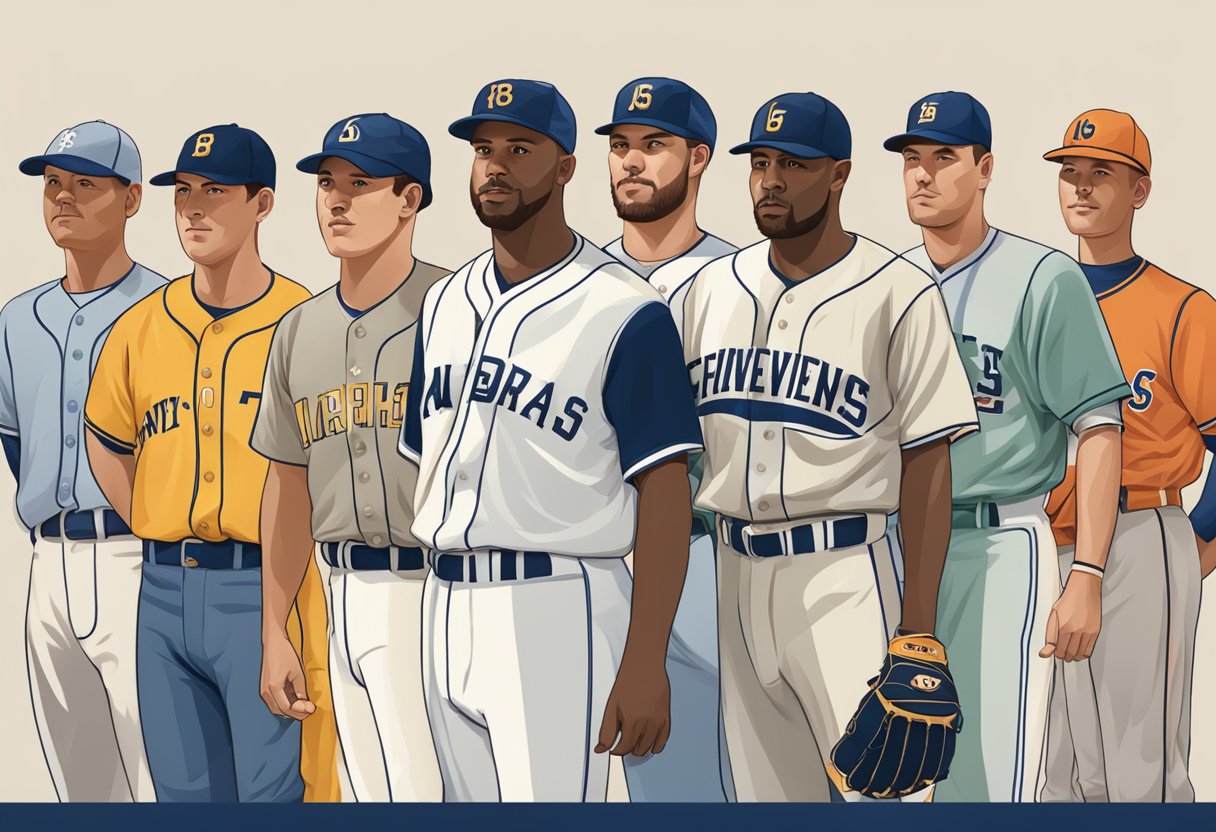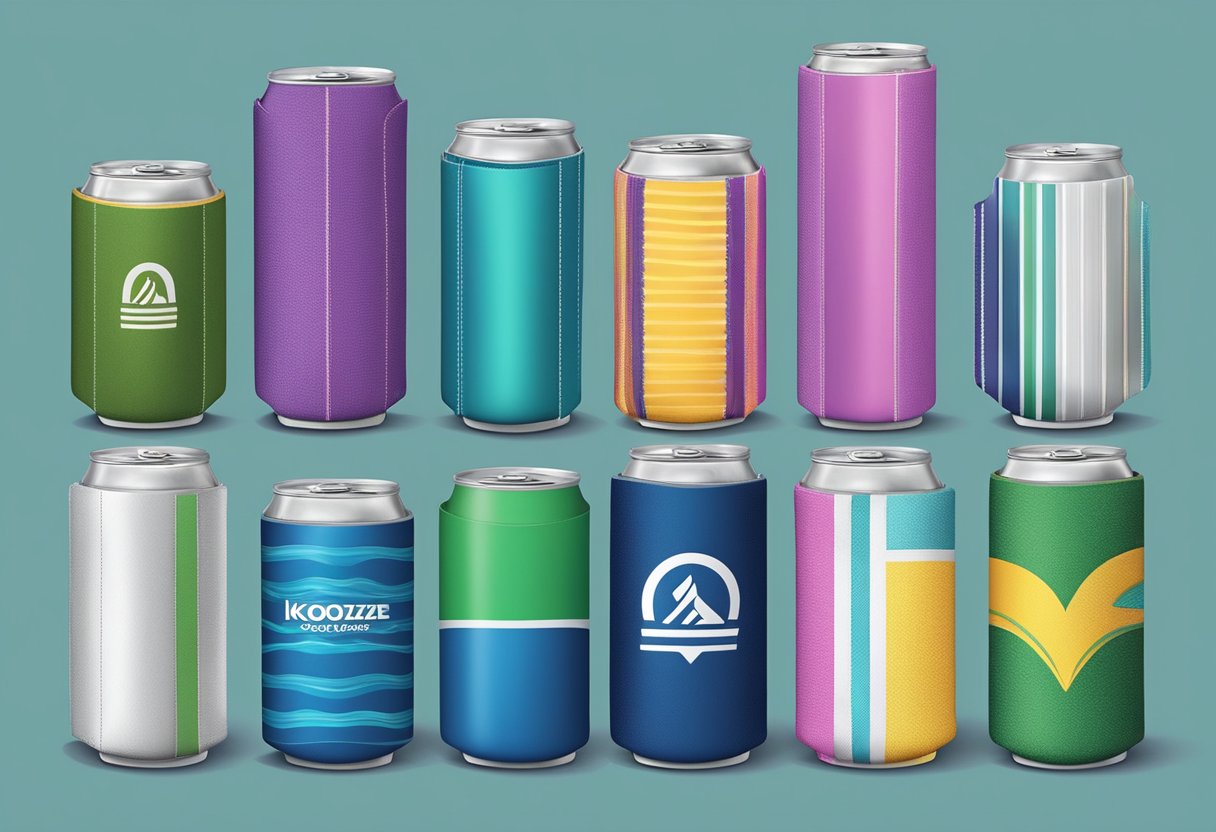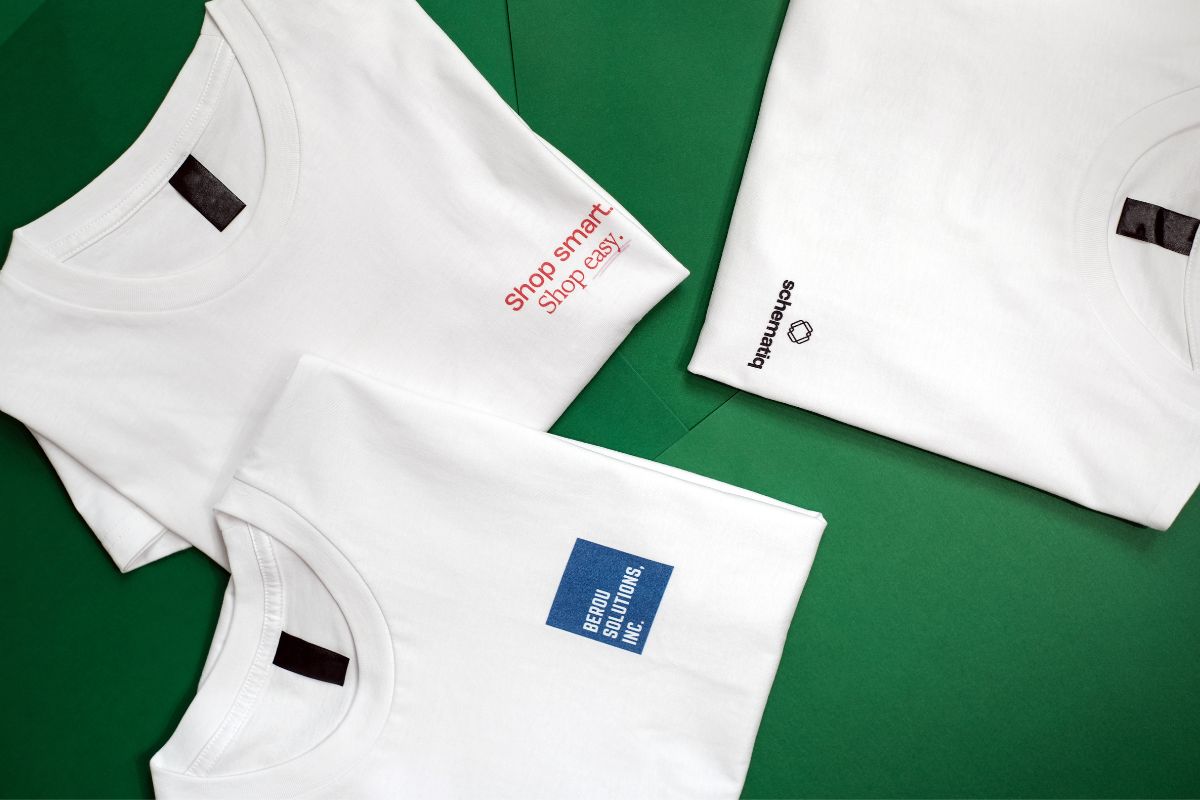Baseball uniform color schemes are more than just aesthetics; they are a fundamental aspect of a team’s identity and history. As you delve into the world of baseball uniforms, you’ll notice that each team’s color palette is chosen with intention, representing the club’s spirit and regional heritage. The tradition of using distinctive colors for baseball uniforms dates back to the late 19th century, with teams like the Cincinnati Red Stockings adopting sock color to signal their identity. This practice evolved over time, with full uniforms reflecting a team’s branding.
The significance of a uniform’s color scheme extends beyond the color of socks or jerseys; it serves as a visual representation for fans and a symbol of unity for players. Teams like the Pittsburgh Pirates and the Chicago Cubs have historically paid tribute to the Negro Leagues by adopting their color schemes for special games, while other teams have used color to commemorate events or anniversaries. Your favorite baseball team’s uniform is likely steeped in a rich history of strategic color choices that correlate with the team’s evolving narrative.
As you follow Major League Baseball or even local league teams, take note of the thoughtful selection of uniform colors and designs. These colors may influence merchandise, fan attire, and even the atmosphere of the stadium during games. Whether teams opt for classical pinstripes or a more modern, sleek look with bold colors, the uniform is a crucial aspect of the game’s culture, connecting generations of players and fans alike.
History and Evolution of Baseball Uniforms
In 1849, you would have seen the New York Knickerbockers donning blue wool pants, white flannel shirts, and straw hats — a far cry from today’s baseball attire. The journey of baseball uniforms has been marked by a mixture of tradition and trendsetting, reflecting both the sport’s heritage and its willingness to embrace change.
By the mid-20th century, with color television’s rise, your viewing experience was enhanced as teams like the Kansas City Athletics introduced vibrant gold and green uniforms. A notable moment was in 1975 when the Houston Astros sparked a “color revolution” with rainbow jerseys.
Here’s a brief timeline of color transformations involving some key teams:
- 1940s-50s: The Brooklyn Dodgers and New York Giants stick to classic blue, evident in their enduring legacy.
- St. Louis Browns: Before moving to Baltimore, you would spot them in brown-based uniforms.
- Negro Leagues: Clubs such as the Pittsburgh Crawfords and Kansas City Monarchs made important contributions to the rich tapestry of baseball with their unique attire.
In the late 20th century and beyond, expansion teams such as the Florida Marlins, Colorado Rockies, Arizona Diamondbacks, and Montreal Expos added fresh hues to the MLB palette. For example, the Marlins have periodically adjusted their color scheme since their inception in 1993, with changes reflecting Miami’s vibrant culture.
Teams like the Philadelphia Phillies, too, have played with their color scheme, oscillating between subtle and stark changes while maintaining their classic look.
As you watch the game today, it’s clear that while team identities and colors have shifted over time, the spirit of innovation within baseball uniforms remains woven into the fabric of the sport.
Major League Baseball Uniform Standards
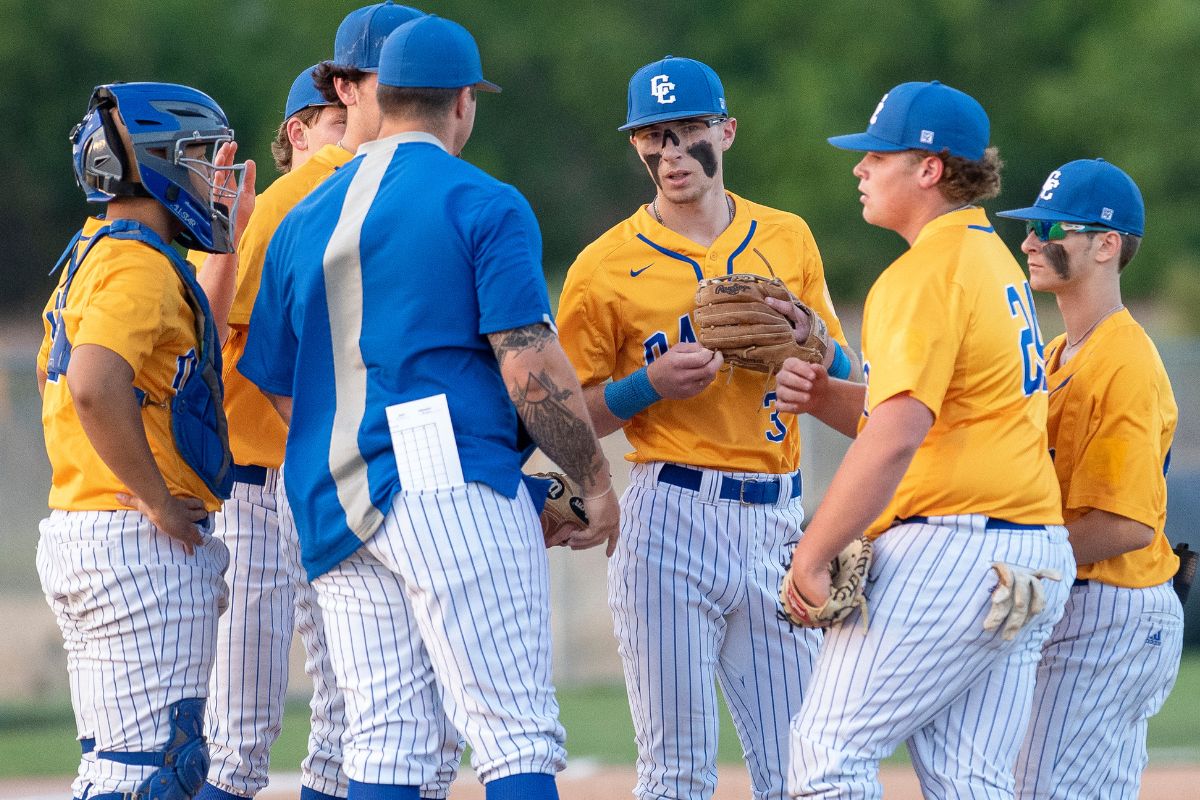
When you tune in to watch Major League Baseball (MLB), you’ll notice the visually distinct uniforms that set the home team apart from the visitors. MLB teams have home uniforms, typically in light colors or white, perfect for the home crowd to identify with their players. On the other hand, away uniforms, commonly known as “road grays,” are darker in color, making it easy to differentiate teams during away games.
Here’s how the standard uniform configuration looks:
- Home: White or light-colored uniforms
- Road: Gray or a darker shade relative to the home uniform
Uniform consistency is critical for the MLB, and this extends beyond color schemes. All players on a team must wear uniforms that are identical in color, trim, and style. A player’s uniform includes a jersey, undershirt, pants, stockings, and cap. Notably, each jersey features a minimum six-inch number on the back, ensuring players are easily identifiable.
Keep in mind that uniform details have evolved. As of 2024, Nike, the official uniform supplier of MLB, has introduced new uniform changes while maintaining the traditional color fidelity. Every club’s colors remain the same, albeit with standardizations across the board, including a uniform color palette and designs from MLB’s dedicated team. These changes are aimed at modernizing the look while preserving the rich heritage of baseball attire.
It’s essential for any undershirt exposed to view to be solid color and consistent across all team players, except for the pitcher. This rule ensures a neat and professional appearance for all team members. Remember, your team’s uniform is a significant part of its identity on the field, reflecting the spirit and history of the club within the stipulated guidelines of Major League Baseball.
Color Psychology in Baseball Uniforms
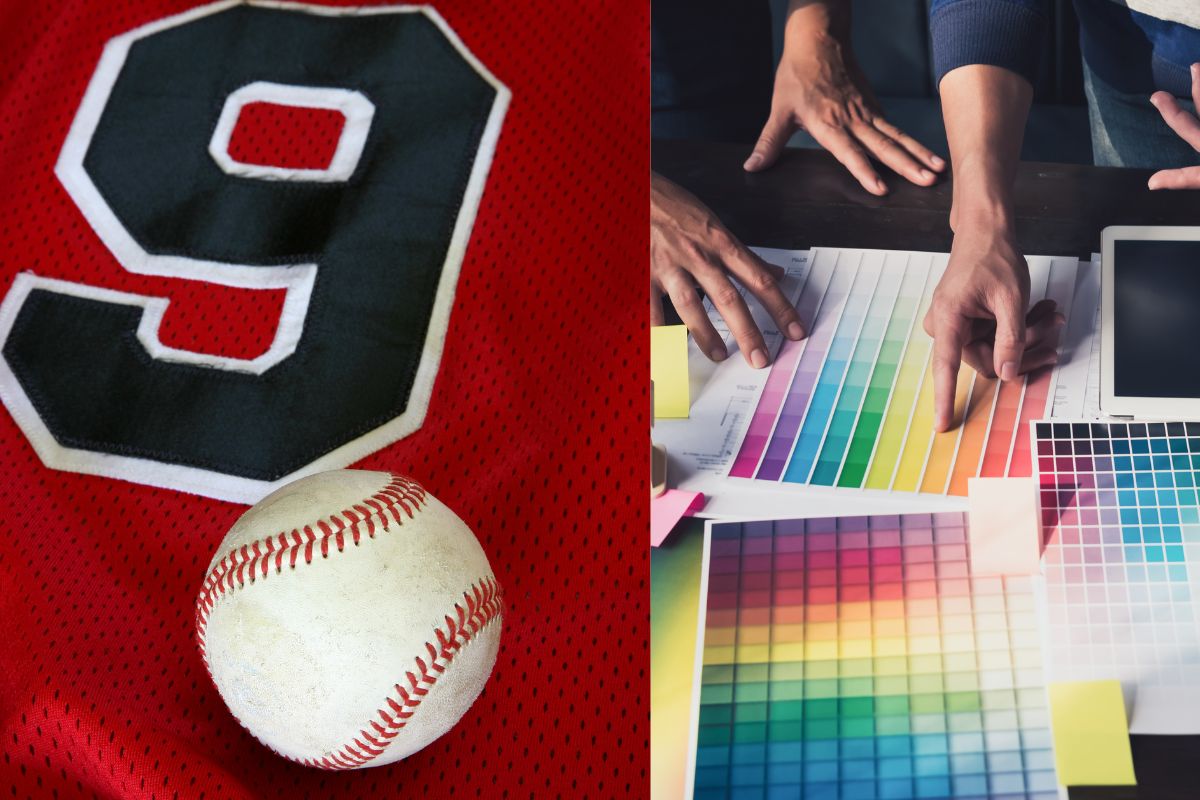
When you look at a baseball team’s uniform, you’re seeing more than just fabric; you’re witnessing a deeply psychological game played with colors. Your favorite baseball teams use color to embody their identity and influence fan and player emotions.
The Significance of Red and Blue
Red is often associated with energy and aggression, making it a popular choice for teams that want to exude power and dominance. Blue, on the other hand, symbolizes loyalty and stability, often chosen to foster a sense of trust and camaraderie.
| Primary Colors | Psychological Influence |
| Red | Energy, Passion, Aggression |
| Blue | Calm, Trust, Stability |
Neutral Shades for a Subdued Statement
Neutral shades play a crucial role too. White is used for its purity and clarity, allowing other colors to stand out, while Gray and Black provide a sense of balance and refinement. Navy Blue, deemed a neutral, carries the weight of traditionalism and professionalism, a favorite in the New York Yankees’ uniforms.
- White: Clarity, Purity, Cleanliness
- Gray: Neutrality, Sophistication
- Black: Strength, Elegance
Alternative Hues for Unique Identities
Teams sometimes adopt Orange or Purple, each providing a unique psychological impact. Orange, with its vibrancy, promotes enthusiasm and excitement, whereas purple is often linked to luxury and creativity, albeit less commonly seen on the field.
Incorporating these colors into uniforms is not a random selection; it’s a strategic choice that reinforces a team’s story. As you don your team’s colors, you’re enveloped in a tradition and psychological narrative that extends beyond the baseball diamond.
Notable MLB Team Color Schemes
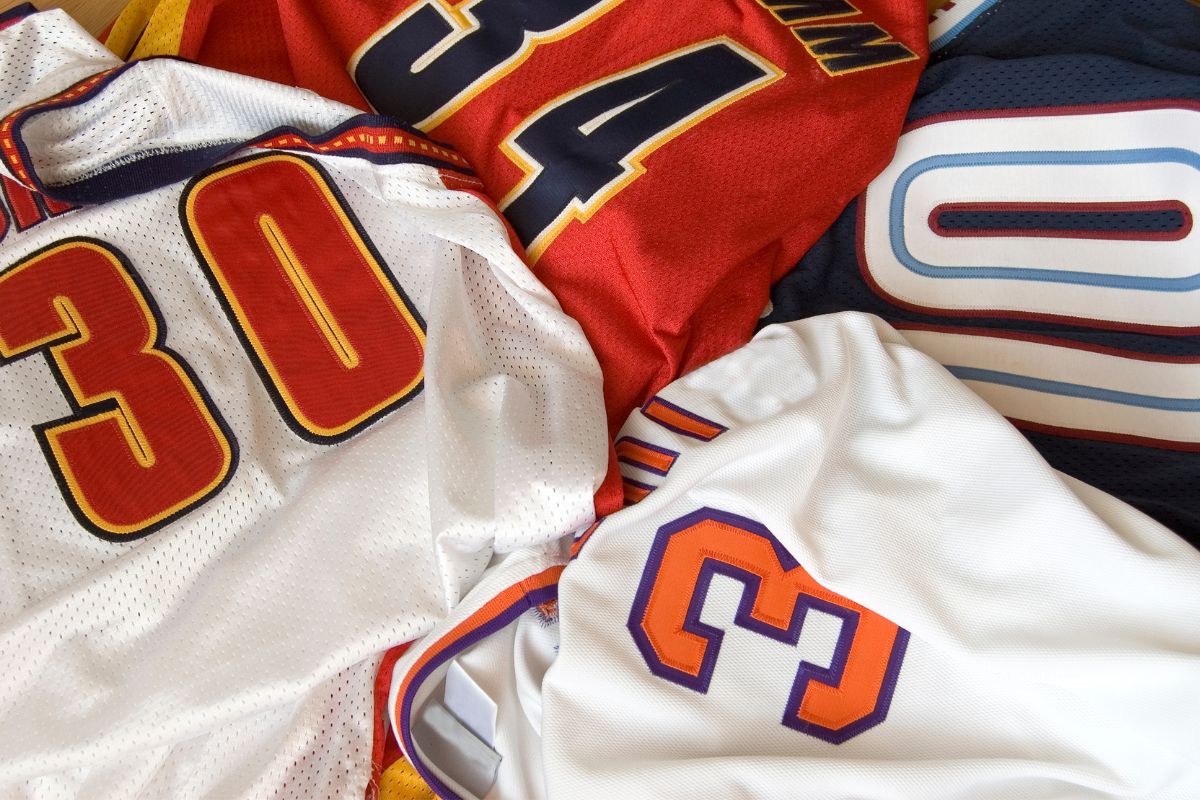
In the wide array of Major League Baseball, team colors not only define the visual identity but also the cultural essence and history of the franchises you know and love. From classic to bold, these color schemes are a testament to the teams’ legacies and the passion they evoke among fans.
New York Yankees
The Yankees have historically embraced a simple yet iconic color scheme of navy blue and white. The addition of grey in 2010 as an official color is a subtle nod to their timeless pinstripes.
Chicago Cubs
The Cubs are known for their consistent use of blue and red, a color combination that has remained relatively unchanged over the years, symbolizing their enduring spirit.
Los Angeles Dodgers
The Dodgers sport a distinctive blue and white palette, which represents the clear skies and ocean vistas that define their home city.
Boston Red Sox
Your Red Sox stand out with their red and navy blue uniforms, echoing the boldness and history of one of baseball’s oldest teams.
Philadelphia Phillies
The Phillies have a classic color scheme of red, white, and blue, showcasing their deep American roots and competitive spirit.
Baltimore Orioles
A unique mix of black, orange, and white defines the Orioles, paying homage to Maryland’s state bird with colors that are both striking and evocative of their namesake.
Detroit Tigers
The Tigers don a concise colorway of navy blue and white, where their old English ‘D’ has become an emblem of the team’s rich history and tradition.
Tampa Bay Rays
The Rays have shifted colors over time, featuring a blend of navy blue, light blue, yellow, and white, reflecting the vibrancy and energy of Tampa Bay.
Miami Marlins
Miami’s Marlins showcase a bold and vibrant mix that includes black, blue, red-orange, and yellow, mirroring the city’s lively culture and atmosphere.
Toronto Blue Jays
The Blue Jays stand proud in their royal blue, navy blue, red, and white color scheme, which is as striking as it is emblematic of the team’s Canadian roots.
Colorado Rockies
The Rockies are known for their purple and black with silver accents, colors that are as majestic as the Rocky Mountains they’re named after.
San Francisco Giants
San Francisco’s Giants embrace an iconic orange and black palette, colors that have become synonymous with their storied past and competitive nature.
Pittsburgh Pirates
The Pirates capture attention with their black and gold colors, a scheme that is not only memorable but also shared with Pittsburgh’s other sports teams, creating a strong city-wide identity.
Uniform Components and their Functions
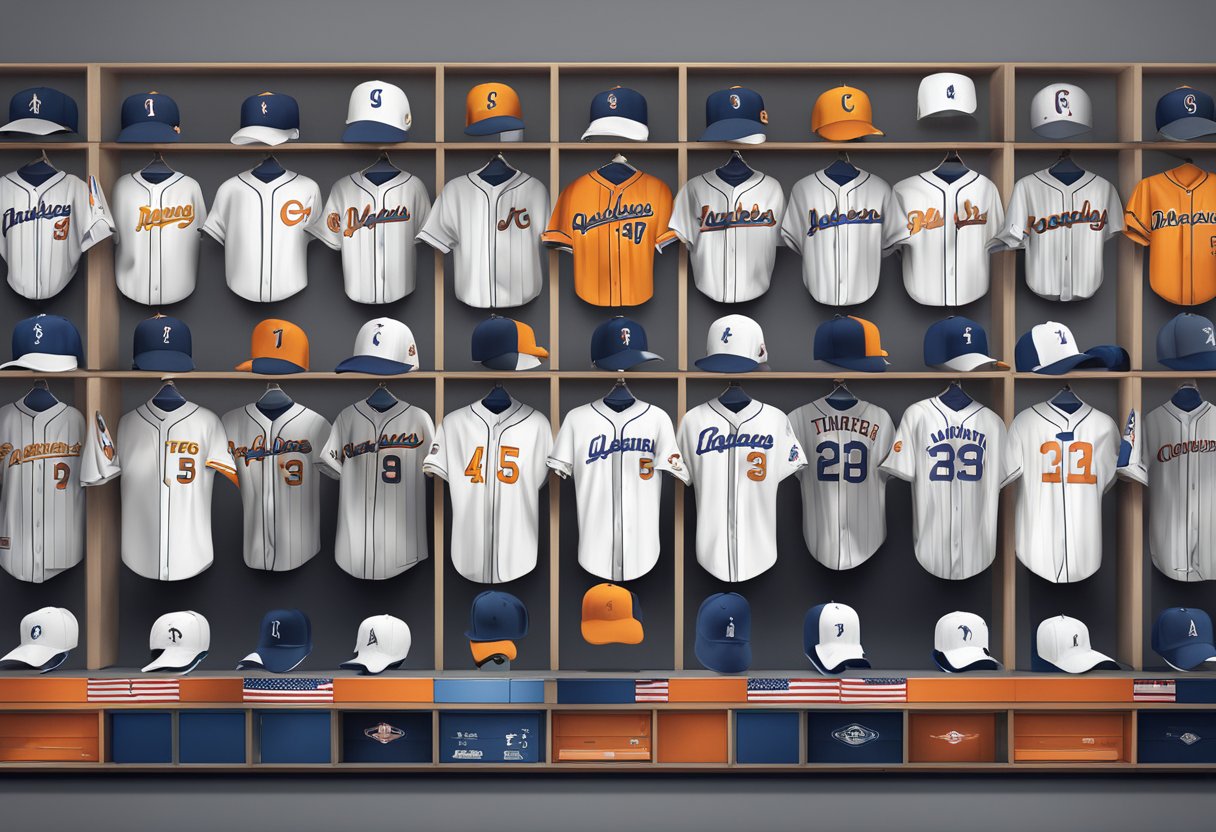
Your understanding of baseball uniforms is incomplete without recognizing the specific functions of their components. Each part, from the jersey down to the belt, serves a purpose, blending form with function and reinforcing team identity.
Jerseys
Baseball jerseys represent more than just your team’s colors; they’re a canvas displaying your team’s logo and your personal identification as a player. Traditionally, in MLB uniforms, home jerseys are typically white with the team’s name, while away jerseys are often gray or a color incorporating the team’s identity. The jerseys ensure quick recognition of players on the field by featuring:
- Front: Team logo or city name
- Back: Player’s name and number
Pants
Often referred to as trousers, the baseball pants complement the jerseys to round out the uniform. Functionally, they are designed for ease of movement and durability to withstand the rigors of sliding and diving. Your pants should fit comfortably and not impede agility. The color coordination with jerseys is vital—home and away color trends apply here as well.
Caps
The cap is a crucial element, acting as a sun shield for better visibility during play. It carries with it the team’s emblem on the front, reinforcing the team’s identity. Caps may vary slightly in terms of brim shape and fit, but the essential design remains constant across the MLB.
- Color: Consistent with the team’s scheme
- Logo: Front-center for brand and team recognition
Belts
Finally, belts serve a dual purpose in your uniform. While primarily keeping your pants secure during the game’s rapid movements, they also provide a visual break between the jersey and pants, often coordinated with the team’s primary or secondary color palette. They are a subtle yet critical aspect of uniform aesthetics.
Customization and Personalization in Uniform Design
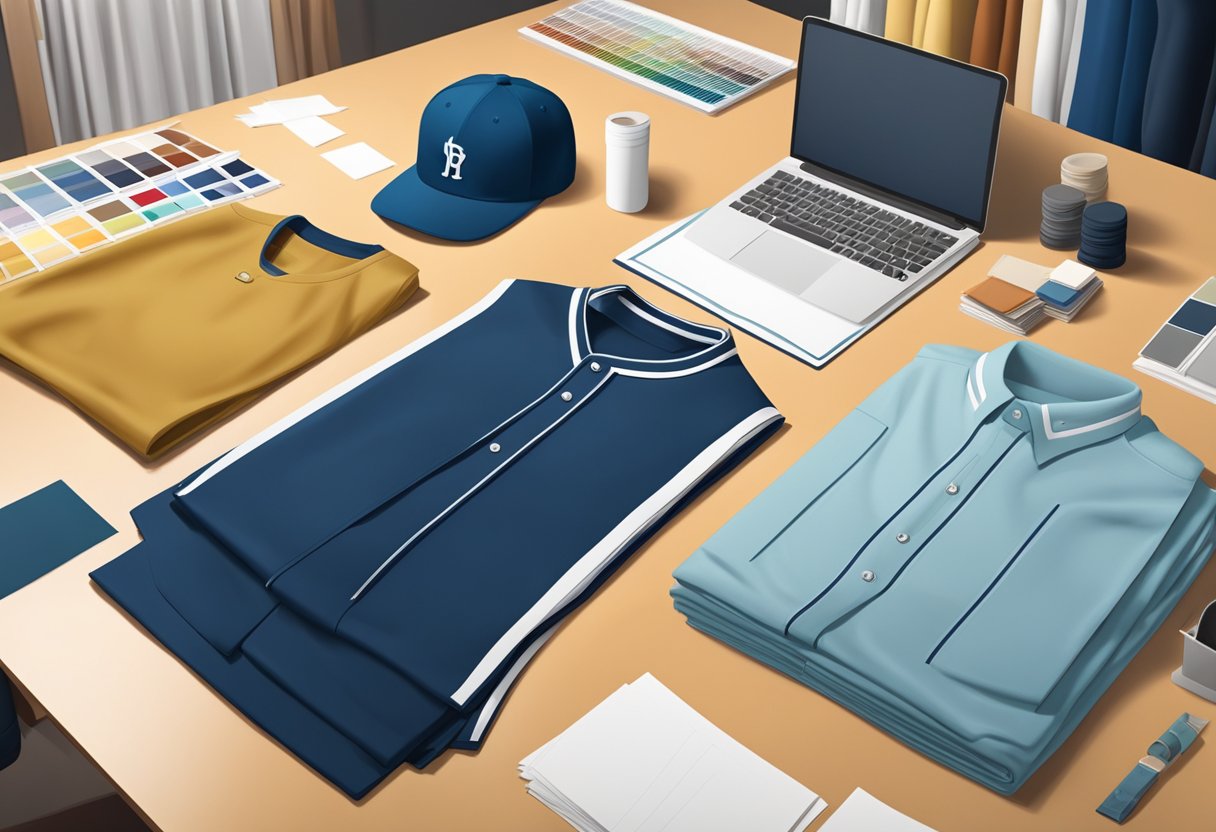
When you design a custom baseball uniform, the power of personalization is in your hands. Your team’s identity is directly reflected in the color schemes and details of your jerseys. Here’s how to make the most of customization:
- Color Choices: Your primary color sets the tone. It’s the main hue representing your team and is often the jersey’s base color. Complementary colors serve as accents, appearing on the sleeves, buttons, and logos. Stick to a palette that is consistent with your team’s brand and ethos.
- Jersey Design Layout: You have options ranging from crewneck to V-neck, from two-button to full-button configurations. Each choice carries a different aesthetic and contributes to your team’s unique look.
- Decoration Details:
- Logos: Your team logo is a pivotal focal point. Positioning it prominently ensures team recognition.
- Numbers & Names: These can be placed and sized for desired visual impact. Typically, numbers are on the back and sometimes the front; names appear across the shoulders.
- Stripes and Patterns: Add character with pinstripes, edge piping, or contrasting sleeve designs.
- Material and Fit: Advanced polyester blends that offer moisture-wicking properties keep players comfortable. Choices in fit—ranging from relaxed to body-contouring—can impact performance and confidence on the field.
When customizing your baseball uniforms, every detail from the fabric to the font style matters. Utilize design tools or consult with uniform experts to ensure your apparel is both visually striking and functional. Remember, a well-designed uniform fosters team unity and can give you a psychological edge before stepping onto the field.
Material and Manufacturing of Baseball Uniforms
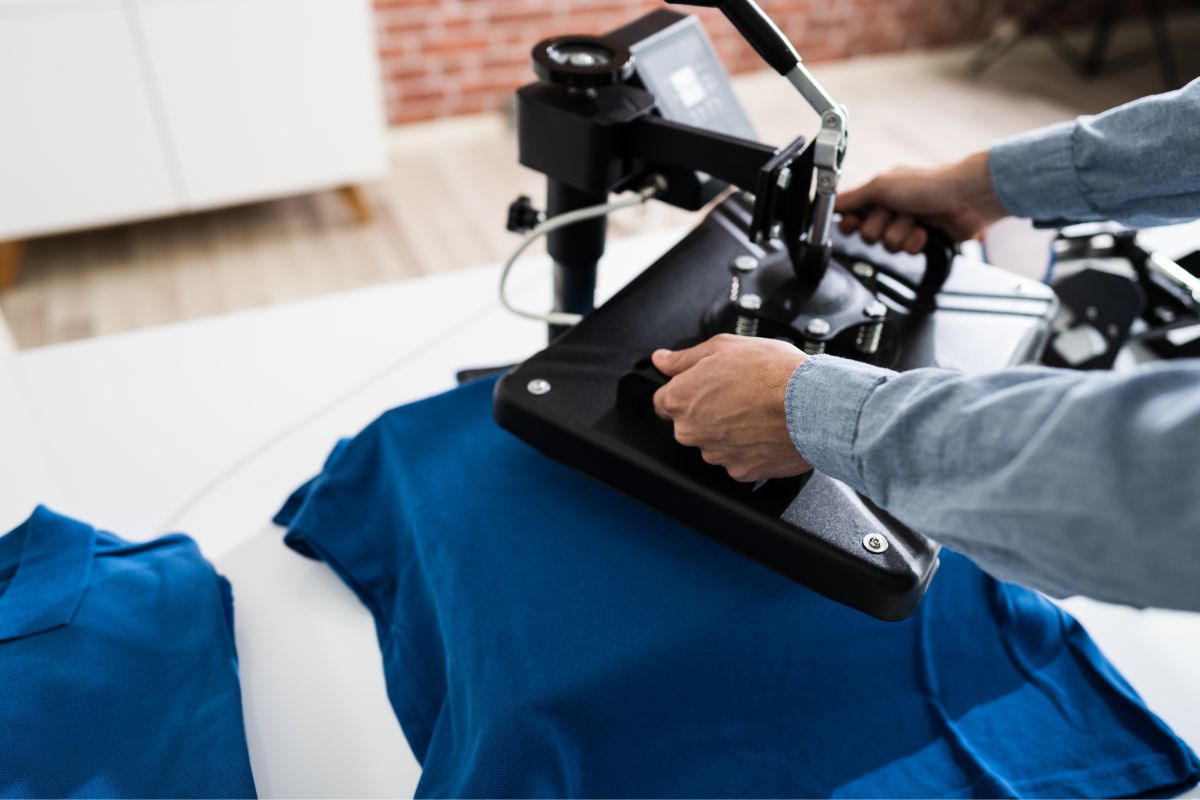
When you consider the material and manufacturing of baseball uniforms, quality and product longevity are paramount. Traditionally, uniforms were made from wool, but modern baseball uniforms are primarily composed of polyester. This synthetic fabric is chosen for its durability, ability to wick moisture away from the body, and its ease of care. Polyester also retains color well, ensuring that uniforms maintain their vibrant appearance over time.
Uniform manufacturing has seen significant advancements with major companies like Nike entering the arena. Here’s a breakdown of the key aspects:
Fabric Quality:
- Polyester is lightweight and allows for full range of motion.
- Microfiber blends provide added comfort and flexibility.
Manufacturing Process:
- Advanced textile technology is used to enhance the fabric’s breathability and moisture-wicking properties.
- State-of-the-art sewing and laser-cutting techniques ensure precise and consistent fits.
- Digital sublimation printing allows for high-definition designs and logos that are fade-resistant.
- Embroidery and patches are often added for personalization without compromising the fabric’s integrity.
Given these points, it’s evident that the modern baseball uniform is a product of careful design and manufacturing processes, where the goal is to equip you with attire that not only symbolizes team spirit but also enhances performance on the field.
Fan Engagement and Uniform Sales
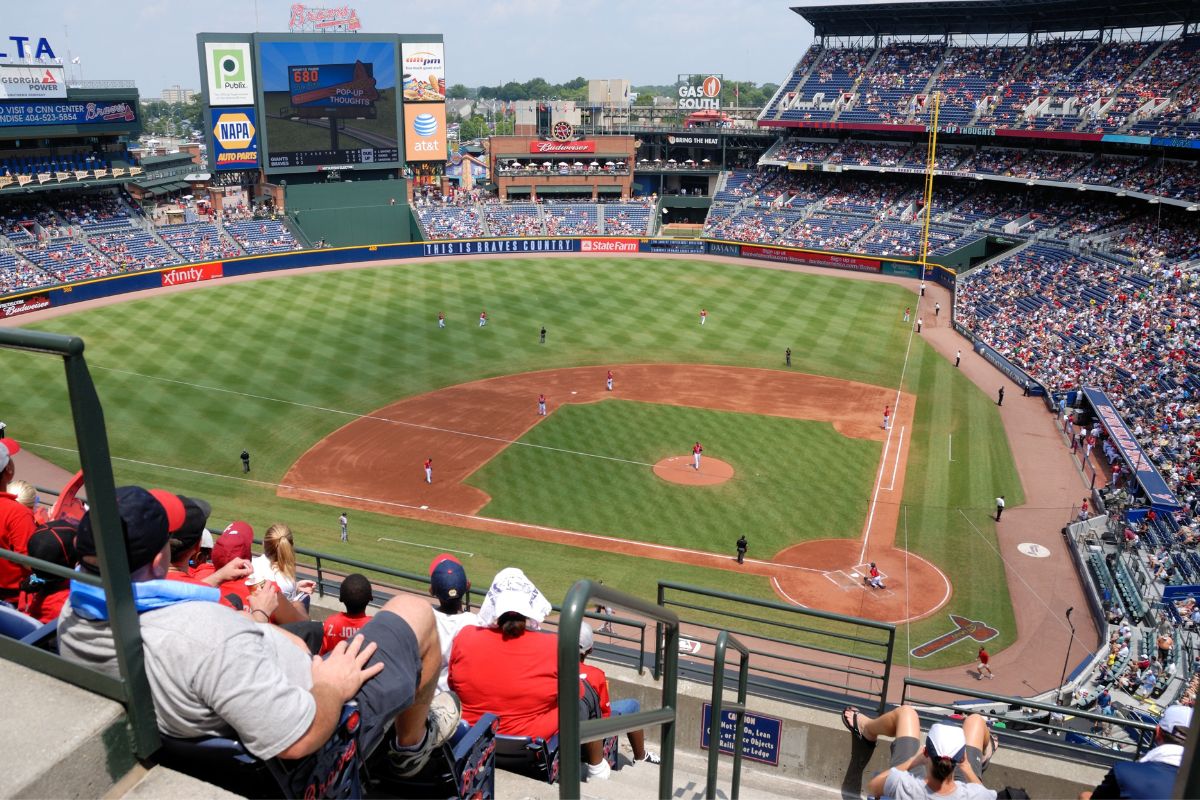
When your favorite MLB team trots out onto the diamond clad in their latest uniforms, it’s more than just a style statement—it’s a strategic move by the franchise and the brands involved. Customarily, Nike and Fanatics are the power hitters for MLB uniform design and retail. Their collaboration with teams deeply impacts your engagement and their sales figures.
Uniforms in baseball serve as a visual representation of team identity and fan loyalty. When a franchise updates its aesthetic, it is often a nod to your passion, invoking nostalgia or embracing modern trends. The MLB understands the connection between brand exposure and fans wearing jerseys that match their favorite players.
Here’s a quick glance at the significance of uniform colors:
- Red: Most common color in MLB uniforms, signifying energy and passion.
- Blue: Symbolizes trust and is a staple color for numerous teams.
| Color | Significance in MLB Uniforms |
| Red | Dominant color, reflects energy |
| Blue | Conveys trust, widely used |
Responses to changes in uniform design can vary. When sponsor patches were first introduced on sleeves in 2020, there were mixed reactions. Yet, these changes present unique opportunities for brands and franchises to gauge fan perception and purchasing behavior.
For you, the fan, buying the latest jersey is not just about owning a piece of fabric; it’s about owning a piece of history and making a statement of allegiance. Each purchase strengthens the franchise’s brand and validates the designs set forth by owners and stakeholders.
Remember, your enthusiasm and choice of apparel directly influence uniform sales. It’s a cycle where your support and pride in the team colors are key players in the economic game of sports merchandise.
Evolution of Team Logos and Branding
Your understanding of Major League Baseball (MLB) team identities must include the evolution of their logos and branding efforts. These visual elements are vital in connecting fans with their favorite teams and encapsulating the franchise’s history and ethos.
Initially, team logos often stuck close to simple representations, incorporating team initials and straightforward colors. For example, the Minnesota Twins’ branding saw significant updates over the years, where their logo evolved from merely the team name to a visual representation interlocking the letters “T” and “C,” signifying the Twin Cities, as detailed on SportsLogos.Net.
Uniform colors in MLB have exhibited remarkable consistency, particularly for teams like the Yankees, Dodgers, and Red Sox. These squads have rarely strayed from their classic hues, maintaining a strong brand recognition. Brands like the Cardinals have remained steadfast with red, the Dodgers with blue, and the Orioles have opted for orange. These color schemes have become intrinsic to the identity of each team and are instantly recognizable to fans across the nation.
As trends and design technologies advanced, teams began to incorporate more elaborate graphics into their logos, many visible at SportsLogos.Net. The simultaneous rise of color television in the 1960s and advancements in merchandising prompted teams to explore more dynamic logo designs, seeking to capture fan attention through striking visual presence.
Your exploration into the teams’ branding journeys showcases a blend of tradition and modernity, as MLB teams have navigated changes in society and technology to establish their unique visual identities.
Baseball Uniform Trends and Innovations
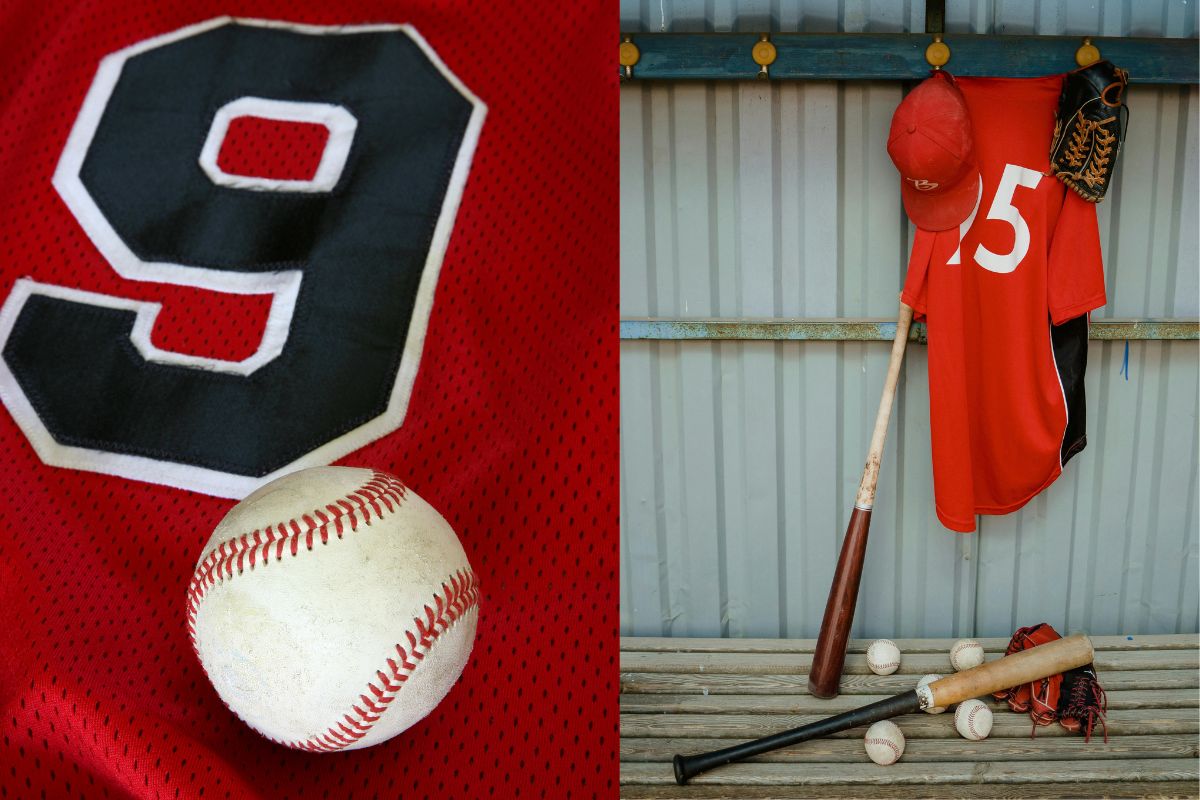
Baseball uniforms have seen a shift in color trends with a move toward brighter hues and diverse color schemes. You might have noticed more teams embracing powder blue for their away games, a nostalgic nod to uniforms of the past. These throwback designs are not only a homage to baseball history but also a fan favorite, often featured during special game days or as alternate jerseys.
| Era | Color Trend |
| Past | Traditional Grey |
| Present | Bright Colors & Powder Blue |
Pinstripes remain an evergreen feature for several teams, symbolically anchoring your team’s identity, while still allowing for variations in hue and saturation. This design element has been a very recognizable mark of traditional uniforms, yet it manages to stay current with subtle integrations into modern kits.
Your socks also tell a story. The color of stockings was once a significant part of the uniform, and this aspect is seeing a resurgence. Nowadays, players might match their socks with the main or accent color of their uniforms, creating a cohesive look from head to toe.
In terms of materials, expect innovative fabrics that offer better moisture management and durability without compromising comfort. As technology progresses, you’ll likely see uniforms that are lighter, provide better movement, and feature advanced thermal properties to keep players cool.
Remember, your team’s uniform is more than just attire—it’s a representation of your team’s spirit and evolving culture. The colors, patterns, and materials all reflect the dynamic nature of baseball, ensuring that while the game’s essence remains, your team’s image moves confidently with the times.
Regulations and Restrictions
When selecting a baseball uniform for Major League Baseball (MLB) competition, it’s essential to adhere to a set of stringent regulations that ensure uniformity and fairness across all teams. All team members are required to wear uniforms that are identical in color, trim, and style. Particularly, your uniform needs to have a matching appearance with your teammates to avoid confusion and uphold the professional aesthetic of the league.
Caps and shoes form an integral part of your equipment; however, track spikes are prohibited. If you need to wear a head protector during a game, this piece of safety equipment commonly substitutes the traditional cap. As per the MLB dress code, your shoes must be composed of at least 51% team colors. Additionally, your shirt must be tucked in, and wearing the team hat is mandatory.
Let’s consider the uniform numbering and undershirts:
- Your jersey must feature a minimum six-inch number on the back.
- Any visible portion of an undershirt should be a consistent solid color that matches with the rest of your team’s gear.
Coaches have the option of wearing team uniforms, jackets, or sweaters, according to tradition and league guidelines. Remember, these regulations are not only about aesthetics; they are in place to eliminate any visual distractions that might affect the gameplay and to maintain the professional integrity of the sport. Compliance is not only expected but required as part of your commitment to the game and your respect for fellow players and fans alike.
Baseball Uniforms in Different Leagues
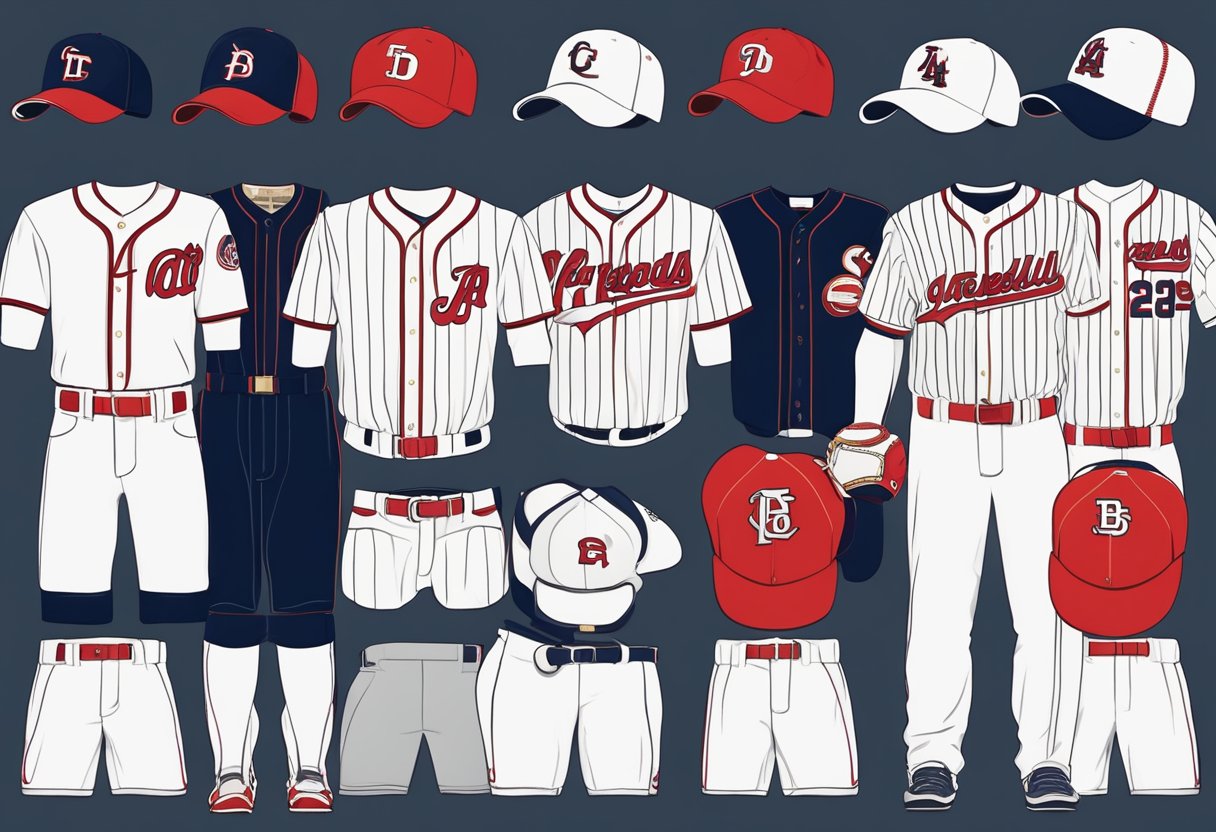
When you consider the rich tapestry of baseball uniforms, you’ll notice the distinct evolution across different leagues. In Major League Baseball (MLB), uniforms serve as a visual history, reflecting changes and traditions unique to each team.
The National Basketball Association (NBA) has also cultivated its own style within its uniform designs. While distinct from MLB, the NBA’s use of color and design somewhat parallels baseball’s history, with teams establishing branding through specific color schemes.
MLB Uniforms:
- Historical Shifts: Teams like the Yankees and Dodgers have maintained a consistent color scheme for decades, while others have seen more change.
- Negro Leagues Tributes: MLB teams occasionally wear historically inspired uniforms, such as those from the Negro Leagues, to honor baseball’s broader legacy.
NBA Uniforms:
- Team Identity: Each NBA team has a home, road, and alternate uniform, often utilizing bold colors and innovative designs to stand out during games.
- Special Editions: The NBA frequently introduces special edition uniforms to celebrate occasions or eras, a practice mirrored in MLB’s City Connect series.
Here’s a snapshot of uniform elements in MLB:
| Element | MLB Example |
| Primary Color | Yankees: Navy Blue |
| Secondary Color | Dodgers: White |
| Special Edition | City Connect Uniforms |
| History Tribute | Retro Classic Uniforms |
In comparison, NBA uniforms also balance traditional elements with a push for modernity. Each league expresses its culture and identity through the dynamic use of color and design in their team’s uniforms, an aspect you can appreciate as a testament to sports heritage and team spirit.
Frequently Asked Questions
Selecting the right color scheme for baseball uniforms is crucial for team identity and morale. Below are some specific questions and answers to help you understand the intricacies involved in choosing baseball uniform colors.
How do teams select their baseball uniform colors?
Teams often pick colors that match their brand, logo, or city. Traditionally, colors like red, white, and blue are popular due to their association with the sport’s history and patriotic symbolism.
What are the common color palettes for youth baseball uniforms?
Youth baseball uniforms tend to feature bright and bold colors. Common choices include variations of red, blue, green, and yellow, facilitating visibility and team spirit.
What guides the design choices for custom baseball uniforms?
Custom baseball uniforms are designed with the team’s unique identity in mind. Choices are influenced by team tradition, player input, and desired aesthetic appeal, aiming to create a distinctive look while adhering to league regulations.
Can you explain the typical color scheme for a baseball uniform jacket?
Baseball uniform jackets often use the team’s primary colors with contrasting sleeves or piping. Navy, black, or dark green jackets with white or lighter colors for details are standard for many teams.
What is the significance of home and away colors in baseball uniforms?
Home uniforms are usually white with the team’s colors as accents, while away uniforms are often gray or the team’s darker primary color. This tradition aids in distinguishing teams during games.
How are color trends in baseball uniforms evolving?
Baseball uniforms are embracing modern trends with more teams experimenting with alternate and throwback designs. This includes the use of brighter colors, retro patterns, and even the integration of technology in creating dynamic uniforms for special events.

